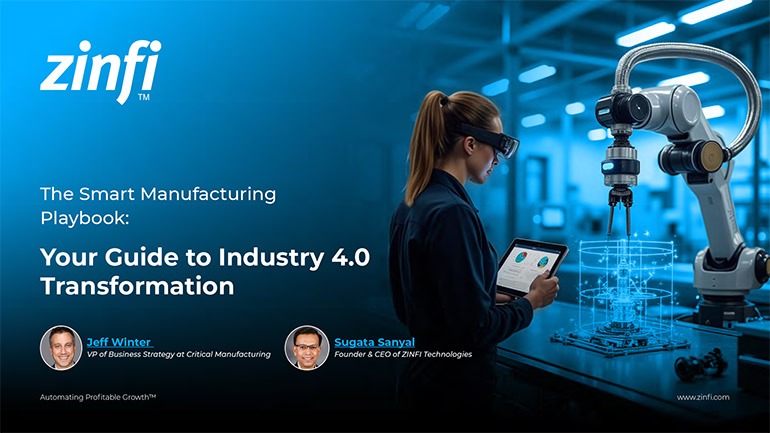Glossary - What is - Marketing Resource Optimization
What is Marketing Resource Optimization?
Marketing Resource Optimization (MRO) is a strategic approach focused on efficiently allocating, deploying, and managing marketing resources to maximize return on investment (ROI) and achieve business objectives. MRO encompasses the planning, tracking, and analyzing marketing assets, budgets, and personnel to ensure resources are used effectively. By leveraging data-driven insights and advanced analytics, organizations can optimize their marketing efforts, enhance productivity, and improve overall campaign performance.
In the context of partner ecosystem management and partner management automation, MRO plays a critical role. Effective MRO ensures that marketing resources are aligned with partner needs and strategies, enabling seamless collaboration and maximizing the impact of joint marketing activities. Through automated tools and platforms, organizations can streamline resource allocation, track marketing investments, and measure the effectiveness of partner-driven campaigns, leading to better decision-making and enhanced partner relationships.
Key Takeaways:
- Efficient Allocation of Marketing Budgets: Marketing Resource Optimization enables organizations to allocate budgets more efficiently by analyzing historical data and predicting future trends. This approach ensures that marketing funds are directed towards high-impact activities, reducing wastage and improving ROI. For example, ZINFI’s budget management tools allow businesses to track and optimize their marketing expenditures, ensuring that every dollar spent contributes to achieving strategic goals.
- Improved Campaign Performance: By leveraging MRO, organizations can enhance the performance of their marketing campaigns. Advanced analytics and reporting tools help marketers identify which strategies and tactics yield the best results, allowing them to adjust and optimize their efforts in real-time. ZINFI’s campaign management solutions provide comprehensive insights into campaign performance, enabling continuous improvement and greater effectiveness.
- Enhanced Collaboration with Partners: MRO facilitates better collaboration with channel partners by ensuring that marketing resources are aligned with partner goals and initiatives. Automated platforms streamline the sharing of marketing assets, co-op funds, and performance metrics, fostering a collaborative environment. ZINFI’s partner portal offers a centralized hub for resource management, making it easier for partners to access and utilize marketing resources efficiently.
- Data-Driven Decision Making: Utilizing data-driven insights is a cornerstone of MRO. Organizations can make informed decisions about resource allocation and strategy adjustments based on real-time data analysis. This approach minimizes guesswork and enhances the precision of marketing efforts. ZINFI’s analytics and reporting tools provide actionable insights, empowering businesses to make strategic decisions backed by data.
- Scalability and Flexibility: MRO ensures that marketing resources can be scaled and adapted to meet changing business needs. Whether launching a new product, entering a new market, or adjusting to economic shifts, an optimized resource management strategy provides the flexibility required to respond effectively. ZINFI’s marketing automation tools offer scalable solutions that grow with the business, ensuring sustained efficiency and effectiveness.
Summary of Key Takeaways:
Marketing Resource Optimization (MRO) is essential for maximizing the efficiency and effectiveness of marketing efforts. By ensuring the efficient allocation of budgets, improving campaign performance, enhancing collaboration with partners, leveraging data-driven decision-making, and providing scalability and flexibility, MRO drives better outcomes for organizations. ZINFI’s suite of tools and platforms supports these efforts, helping businesses optimize their marketing resources and achieve their strategic objectives.
Key Examples:
- Automotive Manufacturing: In the automotive industry, MRO can be used to optimize the allocation of marketing budgets across different regions and product lines. For instance, a car manufacturer might use MRO tools to analyze the performance of marketing campaigns for various models, ensuring that funds are allocated to high-performing segments, thereby maximizing ROI.
- Consumer Electronics: Consumer electronics companies can benefit from MRO by tracking the effectiveness of marketing campaigns across different channels. By leveraging data analytics, these companies can identify which channels yield the highest engagement and sales, allowing them to reallocate resources to maximize impact.
- Energy Production: Energy companies can use MRO to optimize marketing efforts to promote renewable energy solutions. By analyzing customer data and market trends, these companies can tailor their marketing strategies to target specific demographics, improving outreach and conversion rates.
- Financial Services: MRO helps optimize marketing resources to promote various financial products and services in the financial sector. Banks and financial institutions can use data-driven insights to allocate marketing budgets more effectively, ensuring that promotional efforts are directed toward high-value customer segments.
- Food and Beverage: Food and beverage companies can use MRO to streamline their marketing efforts across different product categories and markets. By analyzing sales data and consumer preferences, these companies can optimize their marketing strategies to promote popular products and improve overall campaign effectiveness.
- Healthcare Services: Healthcare organizations can leverage MRO to optimize their marketing efforts for various services and treatments. By tracking patient engagement and feedback, these organizations can allocate marketing resources to high-impact areas, improving patient outreach and service utilization.
- Information Technology: IT companies can use MRO to optimize their marketing strategies for different software and hardware products. These companies can allocate resources to high-demand products by analyzing market trends and customer feedback, enhancing marketing efficiency and effectiveness.
- Pharmaceutical Development: Pharmaceutical companies can benefit from MRO by optimizing their marketing efforts for different drugs and treatments. By leveraging data analytics, these companies can identify the most effective marketing channels and strategies, ensuring that resources are used efficiently to promote their products.
- Retail Industry: Retailers can use MRO to optimize their marketing campaigns across different sales channels. By analyzing sales data and customer behavior, retailers can allocate marketing resources to high-performing channels, improving campaign effectiveness and driving sales growth.
- Telecommunications: Companies can leverage MRO to optimize their marketing efforts for various services and plans. By tracking customer engagement and market trends, these companies can allocate resources to high-impact marketing activities, improving customer acquisition and retention.
Conclusion:
Marketing Resource Optimization (MRO) is a critical strategy for ensuring the efficient and effective use of marketing resources. It involves carefully planning, allocating, and managing marketing budgets, assets, and personnel to maximize ROI and achieve business goals. In partner ecosystem management, MRO enhances collaboration, streamlines resource sharing, and improves the performance of joint marketing efforts.
By implementing MRO, organizations can allocate marketing budgets more efficiently, improve campaign performance, enhance collaboration with partners, leverage data-driven decision-making, and ensure scalability and flexibility in their marketing strategies. ZINFI offers a range of tools and platforms that support MRO, providing businesses with the insights and capabilities needed to optimize their marketing resources.
Examples from various industries, such as automotive manufacturing, consumer electronics, energy production, financial services, food and beverage, healthcare services, information technology, pharmaceutical development, retail, and telecommunications, illustrate MRO’s broad applicability and benefits. Each industry can leverage MRO to optimize marketing efforts, improve campaign effectiveness, and achieve better outcomes.
In summary, MRO is essential for organizations seeking to maximize the impact of their marketing resources. By adopting MRO practices and utilizing advanced tools and platforms, businesses can achieve greater efficiency, enhance collaboration, and drive better results in their marketing endeavors.
Associated Keywords:
- Marketing Efficiency
- Resource Management
- Marketing Analytics
















